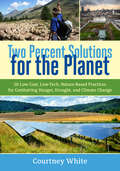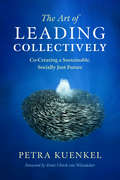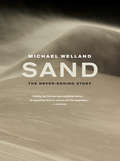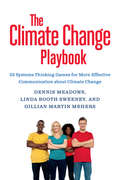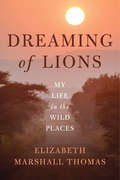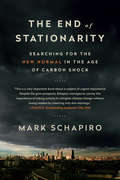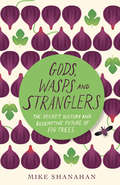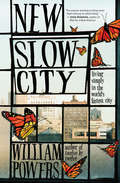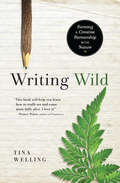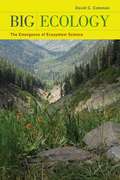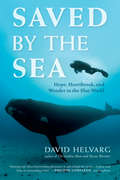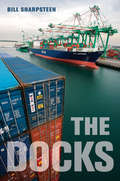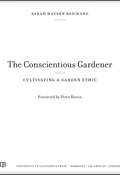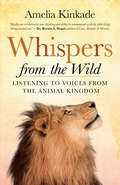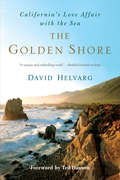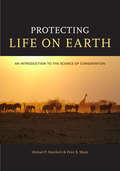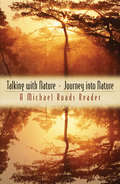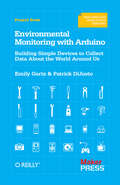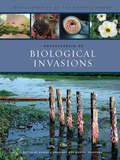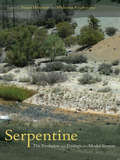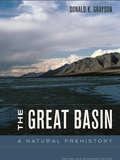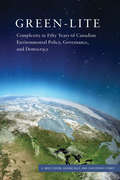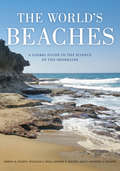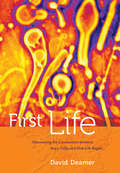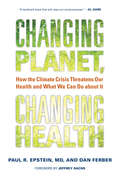- Table View
- List View
Two Percent Solutions for the Planet
by Courtney WhiteTwo Percent Solutions for the Planet profiles fifty innovative practices that soak up carbon dioxide in soils, reduce energy use, sustainably intensify food production, and increase water quality. The "two percent" refers to: the amount of new carbon in the soil needed to reap a wide variety of ecological and economic benefits; the percentage of the nation's population who are farmers and ranchers; and the low financial cost (in terms of GDP) needed to get this work done. As White explained in Grass, Soil, Hope, a highly efficient carbon cycle captures, stores, releases, and recaptures biochemical energy, mitigating climate change, increasing water storage capacities in soil, and making green plants grow. Best of all, we don't have to invent anything new--a wide variety of innovative ideas and methods that put carbon back into the soil have been field-tested and proven to be practical and profitable. They're mostly low-tech, too, relying on natural resources such as sunlight, green plants, animals, compost, beavers, creeks, and more. In Two Percent Solutions for the Planet, White expands what he calls the "regenerative toolbox," to include holistic grazing, edible forests, biochar, weed-eating livestock, food co-ops, keyline plowing, restoration agriculture, bioenergy, aquaponics, animal power, Farm Hack, bees, bears, wildlife corridors, rainwater harvesting, native seeds, and various other projects from across the United States, as well as in Canada, Europe, and Australia. These short, engaging success stories will help readers connect the dots between diverse, exciting, and pragmatic practices, and inspire them to dig deeper into each individual story and concept, energized by the news that solutions abound.
The Art of Leading Collectively
by Petra KuenkelA guide to collaborative impact for leaders in industry, government, and social change networks Our world is facing unsustainable global trends--from climate change and water scarcity to energy insecurity, unfair labor practices, and growing inequality. Tackling these crises effectively requires a new form of leadership--a collective one. But, in a world of many silos, how do we get people to work together toward a common goal? That is one of the most important questions facing sustainability and social-change professionals around the world, and it is a question that Petra Kuenkel answers in The Art of Leading Collectively. Readers learn how to tackle system change for sustainable development, reimagine leadership as a collaborative endeavor, retrain leaders to work collectively, and manage diverse groups through a change process that has sustainability as a guiding focus. Drawing upon two decades of pioneering, internationally recognized work orchestrating multi-stakeholder initiatives, Kuenkel presents her chief tool, the Collective Leadership Compass, and shows others how to use it with large groups of diverse stakeholders to solve complex, urgent problems--particularly those that enmesh business activities, governance, human needs, and environmental impacts. The book offers many examples of collective leadership efforts involving corporate, public, and nonprofit sectors around the world. Readers learn about the processes that led to a sustainable textile alliance, advanced global seafood sustainability, and set standards for sustainable cocoa and coffee production and trade, as well as those that helped nations rebound from war, develop sustainable infrastructure, and tackle resource conflicts with global businesses, to name a few. Kuenkel provides a clear roadmap for leaders from multinational companies involved in partnerships, international organizations engaged in cooperative development, public agencies, and interest groups--as well as for citizens seeking solutions to social and sustainability challenges.
Sand
by Michael WellandFrom individual grains to desert dunes, from the bottom of the sea to the landscapes of Mars, and from billions of years in the past to the future, this is the extraordinary story of one of nature's humblest, most powerful, and most ubiquitous materials. Told by a geologist with a novelist's sense of language and narrative, Sand examines the science--sand forensics, the physics of granular materials, sedimentology, paleontology and archaeology, planetary exploration--and at the same time explores the rich human context of sand. Interwoven with tales of artists, mathematicians, explorers, and even a vampire, the story of sand is an epic of environmental construction and destruction, an adventure in staggering scales of time and distance, yet a tale that encompasses the ordinary and everyday. Sand, in fact, is all around us--it has made possible our computers, buildings and windows, toothpaste, cosmetics, and paper, and it has played dramatic roles in human history, commerce, and imagination. In this luminous, kinetic, revelatory account, we do indeed find the world in a grain of sand.
The Climate Change Playbook: 22 Systems Thinking Games for More Effective Communication about Climate Change
by Gillian Martin Mehers Dennis Meadows Linda Booth SweeneyAdvocates and teachers often find it difficult to communicate the complexities of climate change, because the people they are trying to reach hold so many mistaken assumptions. They assume, for example, that when climate change becomes an obvious threat to our everyday lives, there will still be time enough to make changes that will avoid disaster. Yet at that point it will be too late. Or they assume we can use our current paradigms and policy tools to find solutions. Yet the approaches that caused damage in the first place will cause even more damage in the future. Even the increasingly dire warnings from scientists haven't shaken such assumptions. Is there another way to reach people? The simple, interactive exercises in The Climate Change Playbook can help citizens better understand climate change, diagnose its causes, anticipate its future consequences, and effect constructive change. Adapted from The Systems Thinking Playbook, the twenty-two games are now specifically relevant to climate-change communications and crafted for use by experts, advocates, and educators. Illustrated guidelines walk leaders through setting each game up, facilitating it, and debriefing participants. Users will find games that are suitable for a variety of audiences--whether large and seated, as in a conference room, or smaller and mobile, as in a workshop, seminar, or meeting. Designed by leading thinkers in systems, communications, and sustainability, the games focus on learning by doing.
Dreaming of Lions: My Life in the Wild Places
by Elizabeth Marshall ThomasElizabeth Marshall Thomas has spent a lifetime observing other creatures and other cultures, from her own backyard to the African savannah. Her bestselling books The Hidden Life of Dogs and The Tribe of Tiger, among others, have transported millions of readers into the mysterious lives of animals. Now she transports us into her own remarkable life and delivers a memoir that is both insightful and inspirational. Dreaming of Lions traces Thomas's life from her earliest days, including when, as a young woman in the 1950s, she and her family traveled to the Kalahari Desert to study the Ju/Wa Bushmen The experience taught her not only how to observe but also how to navigate male-dominated fields like anthropology and animal science and to do what she cared about most: spending time with animals and people in wild places, and relishing the people and animals around her at home. Readers join Thomas as she returns to Africa, married and with children, ending up in the turmoil leading to Idi Amin's bloody coup. Throughout this memoir, she invites us into her family life, her writing, and her fascination with animals--elephants in Namibia, dogs in her kitchen, and cougars near her farmhouse in the Monadnock Region of New Hampshire. She also recounts personal struggles, writing about her own life with the same fierce honesty that she applies to the surrounding world.
The End of Stationarity: Searching for the New Normal in the Age of Carbon Shock
by Mark SchapiroScientists have devised a new term to explain the turmoil caused by climate change: the end of stationarity. It means that our baselines for rainfall, water flow, temperature, and extreme weather are no longer relevant--that making predictions based on past experience is no longer possible. But climate change has upended baselines in the financial world, too, disrupting the global economy in ways that are just becoming clear, leaving us unable to assess risk, and causing us to fundamentally re-think economic priorities and existing business models. At the heart of that financial unrest is the role of carbon, and as the world moves toward making more and more polluters pay to emit it, a financial mystery unfolds: What are the costs? Who has the responsibility to pay for them? Who do you pay? How do you pay? And how will those costs ripple through the economy? These are the questions veteran journalist Mark Schapiro attempts to answer as he illuminates the struggle to pinpoint carbon's true costs and allocate them fairly--all while bumping up against the vagaries of the free market, the lobbying power of corporations, the political maneuverings of countries, and the tolerance of everyday consumers buying a cup of coffee, a tank of gas, or an airplane ticket. Along the way, Schapiro tracks the cost of carbon through the drought-ridden farmland of California, the jungles of Brazil, the world's greatest manufacturing center in China, the carbon-trading center of Europe, and the high-tech crime world that carbon markets have inspired. He even tracks the cost of carbon through the skies themselves, where efforts to put a price tag on the carbon left by airplanes in the no-man's land of the atmosphere created what amounted to a quiet but powerful global trade war. The End of Stationarity deftly depicts the wild, new carbon economy, and shows us how nations, emerging and developed, teeter on its brink. Originally published in hardcover as Carbon Shock, the book is updated throughout and includes a new afterword, based on the Paris climate talks.
Gods, Wasps and Stranglers: The Secret History and Redemptive Future of Fig Trees
by Mike ShanahanThey are trees of life and trees of knowledge. They are wish-fulfillers ... rainforest royalty ... more precious than gold. They are the fig trees, and they have affected humanity in profound but little-known ways. Gods, Wasps and Stranglers tells their amazing story. Fig trees fed our pre-human ancestors, influenced diverse cultures and played key roles in the dawn of civilization. They feature in every major religion, starring alongside Adam and Eve, Krishna and Buddha, Jesus and Muhammad. This is no coincidence - fig trees are special. They evolved when giant dinosaurs still roamed and have been shaping our world ever since. These trees intrigued Aristotle and amazed Alexander the Great. They were instrumental in Kenya's struggle for independence and helped restore life after Krakatoa's catastrophic eruption. Egypt's Pharaohs hoped to meet fig trees in the afterlife and Queen Elizabeth II was asleep in one when she ascended the throne. And all because 80 million years ago these trees cut a curious deal with some tiny wasps. Thanks to this deal, figs sustain more species of birds and mammals than any other trees, making them vital to rainforests. In a time of falling trees and rising temperatures, their story offers hope. Ultimately, it's a story about humanity's relationship with nature. The story of the fig trees stretches back tens of millions of years, but it is as relevant to our future as it is to our past.
New Slow City
by William PowersBurned-out after years of doing development work around the world, William Powers spent a season in a 12-foot-by-12-foot cabin off the grid in North Carolina, as recounted in his award-winning memoir Twelve by Twelve. Could he live a similarly minimalist life in the heart of New York City? To find out, Powers and his wife jettisoned 80 percent of their stuff, left their 2,000-square-foot Queens townhouse, and moved into a 350-square-foot "micro-apartment” in Greenwich Village. Downshifting to a two-day workweek, Powers explores the viability of Slow Food and Slow Money, technology fasts and urban sanctuaries. Discovering a colorful cast of New Yorkers attempting to resist the culture of Total Work, Powers offers an inspiring exploration for anyone trying to make urban life more people- and planet-friendly.
Writing Wild
by Tina WellingAlign Your Creative Energy with Nature's "Everything we know about creating," writes Tina Welling, "we know intuitively from the natural world." In Writing Wild, Welling details a three-step "Spirit Walk" process for inviting nature to enliven and inspire our creativity.
Big Ecology
by David C. ColemanIn Big Ecology, David C. Coleman documents his historically fruitful ecological collaborations in the early years of studying large ecosystems in the United States. As Coleman explains, the concept of the ecosystem--a local biological community and its interactions with its environment--has given rise to many institutions and research programs, like the National Science Foundation's program for Long Term Ecological Research. Coleman's insider account of this important and fascinating trend toward big science takes us from the paradigm of collaborative interdisciplinary research, starting with the International Geophysical Year (IGY) of 1957, through the International Biological Program (IBP) of the late 1960s and early 1970s, to the Long-Term Ecological Research (LTER) programs of the 1980s.
Saved by the Sea
by David HelvargAcclaimed as "the premier chronicler of America's complex relationship with our oceans" (Honolulu Weekly), David Helvarg has also been a war correspondent, investigative journalist, documentary producer, and private investigator. The one constant in his adventurous life has been love for the sea. His personal story of love, loss, and redemption, Saved by the Sea is also a profound, startling, and sometimes funny reflection on the state of our seas and the intimate ways in which our lives are linked to the natural world around us. "Amazing and often heartrending adventures in and around the ocean...A great read from an outstanding writer." -- Philippe Cousteau, ocean explorer "Read Saved by the Sea for pleasure, read it for adventure, read it because it conveys the gift of being allowed to slip into David Helvarg's world and view the ocean, and humankind, with profound new understanding. But beware: This book has the power to change the way you think about the world, about yourself, and about the future of humankind." -- Sylvia Earle, ocean explorer and author of The World Is Blue
The Docks
by Bill SharpsteenThe Docks is an eye-opening journey into a giant madhouse of activity that few outsiders ever see: the Port of Los Angeles. In a book woven throughout with riveting novelist detail and illustrated with photographs that capture the frenetic energy of the place, Bill Sharpsteen tells the story of the people who have made this port, the largest in the country, one of the nation's most vital economic enterprises. Among others, we meet a pilot who parks ships, one of the first women longshoremen, union officials and employers at odds over almost everything, an environmental activist fighting air pollution in the "diesel death zone," and those with the nearly impossible job of enforcing security. Together these stories paint a compelling picture of a critical entryway for goods coming into the country--the Port of Los Angeles is part of a complex that brings in 40% of all our waterborne cargo and 70% of all Asian imports--yet one that is also extremely vulnerable. The Docks is a rare look at a world within our world in which we find a microcosm of the labor, environmental, and security issues we collectively face.
The Conscientious Gardener
by Peter Raven Sarah Hayden ReichardIn his influential A Sand County Almanac, published at the forefront of the environmental movement in 1949, Aldo Leopold described a new ecological ethic to guide our stewardship of the planet. In this inspiring book, Sarah Hayden Reichard tells how we can bring Leopold's far-reaching vision to our gardens to make them more sustainable, lively, and healthy places. Today, gardening practices too often damage the environment; we deplete resources in our own soil while mining for soil amendments in far away places, or use water and pesticides in ways that can pollute lakes and rivers. Drawing from cutting edge research on urban horticulture, Reichard explores the many benefits of sustainable gardening and gives straightforward, practical advice on topics such as pest control, water conservation, living with native animals, mulching, and invasive species. The book includes a scorecard that allows readers to quickly evaluate the sustainability of their current practices, as well as an extensive list of garden plants that are invasive, what they do, and where they should be avoided.
Whispers from the Wild: Listening to Voices from the Animal Kingdom
by Amelia KinkadeOne of the world's most renowned animal communicators, Amelia Kinkade has brought thousands into closer contact with their beloved dogs, cats, birds, and horses. Now she shares the wonders of her recent work communicating with wild, and in some cases endangered, animals. <p><p>Amelia takes readers on a rollicking ride as she visits with tigers, elephants, lions, great white sharks, black mamba snakes, whales, and bees. Traveling all over the world, Amelia reveals the inner thoughts and feelings of these extraordinary animals and shares the advice she has gleaned—words about tenderness, reconnection with nature, life after death, and the possibilities of magical awakenings inside the brains of an ever-evolving human race. <p><p>Anyone with a heart, mind, and funny bone will delight in this invitation to understand and appreciate our fellow inhabitants of planet Earth.
The Golden Shore: California's Love Affair with the Sea
by David HelvargFrom the first human settlements to the latest marine explorations, The Golden Shore tells the tale of the history, culture, and changing nature of California's coasts and ocean. David Helvarg takes the reader on both a geographic and literary journey along the state's 1,100-mile Pacific coastline, from the Oregon border to the San Diego-Tijuana international border fence and out into its whale-, seal-, and shark-rich offshore seamounts, rock isles, and kelp forests. Part history, part travelogue, part love letter, The Golden Shore captures the spirit of the California coast and its mythic place in American culture.
Protecting Life on Earth
by Peter B. Moyle Michael Paul MarchettiWritten to be accessible to any college-level reader, Protecting Life on Earth offers a non-technical, yet comprehensive introduction to the growing field of conservation science. This multifaceted exploration of our current biodiversity crisis delivers vivid examples throughout, including features on some of nature's most compelling wildlife. Beginning with a brief introduction to environmental history, the text introduces the central concepts of evolution and ecology, and covers several major issues related to the conservation of biodiversity including extinction, climate change, sustainability, conservation law, and invasive species. It also touches on adjacent disciples such as economics and sociology as they relate to conservation. The text even includes practical advice on the decisions we make every day--how we spend our money, where we live and work, what we eat and buy. Throughout, Protecting Life on Earth underscores the ways in which our future is tied to that of Earth's threatened species, and demonstrates exactly why conservation is so vitally important for us all.
Talking with Nature and Journey into Nature
by Michael RoadsMichael Roads had always been close to nature, but when a river started talking to him, he began to doubt his sanity. A series of encounters with the natural world followed, and Roads began to listen and let go. He found himself led stage by stage to a final wisdom, remarkable in its simplicity and in its message of hope for humanity. This book, a bind-up of his two best-known works, beautifully articulates that message.
Environmental Monitoring with Arduino
by Emily Gertz Patrick Di Justo<p>Right now, thousands of people worldwide are tracking environmental conditions with monitoring devices they’ve built themselves. You can do it too! This inspiring guide shows you how to use Arduino to create gadgets for measuring noise, weather, electromagnetic interference (EMI), water purity, and more. You’ll also learn how to collect and share your own data, and you can experiment by creating your own variations of the gadgets covered in the book. If you’re new to DIY electronics, the first chapter offers a primer on electronic circuits and Arduino programming.</p>
Encyclopedia of Biological Invasions
by Marcel Rejmanek Daniel SimberloffThis pioneering encyclopedia illuminates a topic at the forefront of global ecology--biological invasions, or organisms that come to live in the wrong place. Written by leading scientists from around the world, Encyclopedia of Biological Invasions addresses all aspects of this subject at a global level--including invasions by animals, plants, fungi, and bacteria--in succinct, alphabetically arranged articles. Scientifically uncompromising, yet clearly written and free of jargon, the volume encompasses fields of study including biology, demography, geography, ecology, evolution, sociology, and natural history. Featuring many cross-references, suggestions for further reading, illustrations, an appendix of the world's worst 100 invasive species, a glossary, and more, this is an essential reference for anyone who needs up-to-date information on this important topic. Encyclopedia of Biological Invasions features articles on: * Well-known invasive species such the zebra mussel, chestnut blight, cheatgrass, gypsy moth, Nile perch, giant African snail, and Norway rat * Regions with especially large numbers of introduced species including the Great Lakes, Mediterranean Sea, Hawaiian Islands, Australia, and New Zealand. * Conservation, ecological, economic, and human and animal health impacts of invasions around the world * The processes and pathways involved in invasion * Management of introduced species
Serpentine: The Evolution and Ecology of a Model System
by Susan Harrison Nishanta RajakarunaSerpentine soils have long fascinated biologists for the specialized floras they support and the challenges they pose to plant survival and growth. This volume focuses on what scientists have learned about major questions in earth history, evolution, ecology, conservation, and restoration from the study of serpentine areas, especially in California. Results from molecular studies offer insight into evolutionary patterns, while new ecological research examines both species and communities. Serpentine highlights research whose breadth provides context and fresh insights into the evolution and ecology of stressful environments.
The Great Basin: A Natural Prehistory (Revised and Expanded Edition)
by Donald K. GraysonCovering a large swath of the American West, the Great Basin, centered in Nevada and including parts of California, Utah, and Oregon, is named for the unusual fact that none of its rivers or streams flow into the sea. This fascinating illustrated journey through deep time is the definitive environmental and human history of this beautiful and little traveled region, home to Death Valley, the Great Salt Lake, Lake Tahoe, and the Bonneville Salt Flats. Donald K. Grayson synthesizes what we now know about the past 25,000 years in the Great Basin--its climate, lakes, glaciers, plants, animals, and peoples--based on information gleaned from the region's exquisite natural archives in such repositories as lake cores, packrat middens, tree rings, and archaeological sites. A perfect guide for students, scholars, travelers, and general readers alike, the book weaves together history, archaeology, botany, geology, biogeography, and other disciplines into one compelling panorama across a truly unique American landscape.
Green-lite
by Christopher Stoney Graeme Auld G. Bruce DoernAnchored in the core literature on natural resources, energy production, and environmental analysis, Green-lite is a critical examination of Canadian environmental policy, governance, and politics drawing out key policy and governance patterns to show that the Canadian story is one of complexity and often weak performance. Making a compelling argument for deeper historical analysis of environmental policy and situating environmental concerns within political and fiscal agendas, the authors provide extended discussions on three relatively new features of environmental policy: the federal-cities and urban sustainability regime, the federal-municipal infrastructure regime, and the regime of agreements with NGOs and businesses that often relegate governments to observing participants rather than being policy leaders. They probe the Harper era's muzzling of environmental science and scientists, Canada's oil sands energy and resource economy, and the government's core Alberta and Western Canadian political base. The first book to provide an integrated, historical, and conceptual examination of Canadian environmental policy over many decades, Green-lite captures complex notions of what environmental policy and green agendas seek to achieve in a business-dominated economy of diverse energy producing technologies, and their pollution harms and risks.
The World's Beaches
by Orrin H. Pilkey William J. Neal James Andrew Cooper Joseph T. KelleyTake this book to the beach; it will open up a whole new world. Illustrated throughout with color photographs, maps, and graphics, it explores one of the planet's most dynamic environments--from tourist beaches to Arctic beaches strewn with ice chunks to steaming hot tropical shores. The World's Beaches tells how beaches work, explains why they vary so much, and shows how dramatic changes can occur on them in a matter of hours. It discusses tides, waves, and wind; the patterns of dunes, washover fans, and wrack lines; and the shape of berms, bars, shell lags, cusps, ripples, and blisters. What is the world's longest beach? Why do some beaches sing when you walk on them? Why do some have dark rings on their surface and tiny holes scattered far and wide? This fascinating, comprehensive guide also considers the future of beaches, and explains how extensively people have affected them--from coastal engineering to pollution, oil spills, and rising sea levels.
First Life: Discovering the Connections Between Stars, Cells, and How Life Began
by David DeamerThis pathbreaking book explores how life can begin, taking us from cosmic clouds of stardust, to volcanoes on Earth, to the modern chemistry laboratory. Seeking to understand life's connection to the stars, David Deamer introduces astrobiology, a new scientific discipline that studies the origin and evolution of life on Earth and relates it to the birth and death of stars, planet formation, interfaces between minerals, water, and atmosphere, and the physics and chemistry of carbon compounds. Deamer argues that life began as systems of molecules that assembled into membrane-bound packages. These in turn provided an essential compartment in which more complex molecules assumed new functions required for the origin of life and the beginning of evolution. Deamer takes us from the vivid and unpromising chaos of the Earth four billion years ago up to the present and his own laboratory, where he contemplates the prospects for generating synthetic life. Engaging and accessible, First Life describes the scientific story of astrobiology while presenting a fascinating hypothesis to explain the origin of life.
Changing Planet, Changing Health: How the Climate Crisis Threatens Our Health and What We Can Do About It
by Jeffrey Sachs Dan Ferber Paul R. EpsteinClimate change is now doing far more harm than marooning polar bears on melting chunks of ice--it is damaging the health of people around the world. Brilliantly connecting stories of real people with cutting-edge scientific and medical information, Changing Planet, Changing Health brings us to places like Mozambique, Honduras, and the United States for an eye-opening on-the-ground investigation of how climate change is altering patterns of disease. Written by a physician and world expert on climate and health and an award-winning science journalist, the book reveals the surprising links between global warming and cholera, malaria, lyme disease, asthma, and other health threats. In clear, accessible language, it also discusses topics including Climategate, cap-and-trade proposals, and the relationship between free markets and the climate crisis. Most importantly, Changing Planet, Changing Health delivers a suite of innovative solutions for shaping a healthy global economic order in the twenty-first century.
